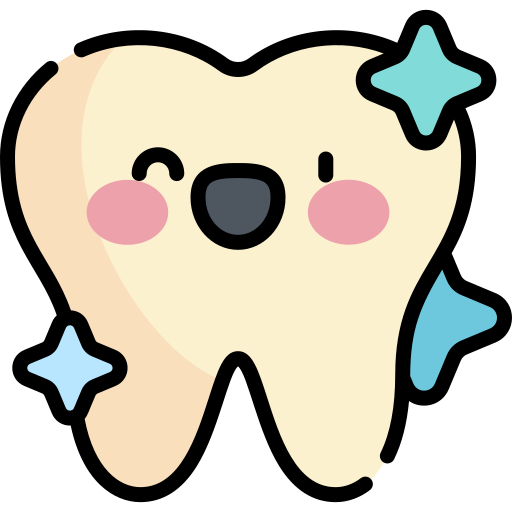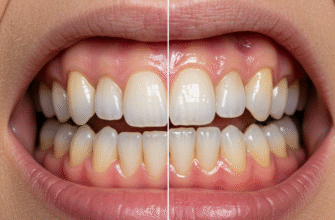That familiar twinge when a dental bill arrives – we’ve all been there. The thought, “Is this really worth it?” often follows closely behind. It’s a common belief that dental visits are a luxury, an expensive undertaking that can be easily postponed or skipped altogether when budgets are tight. But this perspective, while understandable given the upfront costs, often overlooks a much larger, more expensive picture. The truth is, regular dental care isn’t just about spending money; it’s about investing in your well-being and, surprisingly, saving a considerable amount in the long run.
The Real Cost of Skipping the Dentist
Think of it this way: a routine dental check-up and cleaning might feel like a notable expense at the moment. However, compare that to the cost of a root canal, a crown, or even more complex procedures like dental implants. These treatments, often necessitated by neglecting smaller, easily treatable issues, can carry price tags that make preventative care look like a bargain. The myth that dental visits are “too expensive” crumbles when you weigh the cost of prevention against the cost of extensive repair.
Early detection is a cornerstone of affordable dental care. During a regular visit, your dentist isn’t just polishing your teeth; they’re conducting a thorough examination for any nascent signs of trouble. A tiny spot of decay caught early can often be resolved with a simple, relatively inexpensive filling. If left unnoticed and untreated, that same spot can burrow deeper into the tooth, eventually reaching the nerve. What was once a minor inconvenience now becomes a painful problem requiring a root canal and crown – a far more involved, time-consuming, and costly endeavor. The difference in cost and discomfort is significant.
Prevention: Your Financial Shield
Preventative care, which typically includes professional cleanings, examinations, and sometimes x-rays, is designed to stop problems before they even start or to address them at their most manageable stage. Professional cleanings remove hardened plaque (tartar) that regular brushing and flossing can’t tackle, helping to prevent gum disease and cavities. The examination allows your dentist to spot potential issues like gum inflammation, early signs of decay, or even things like oral cancer screenings in some practices. It’s proactive, not reactive.
Imagine your car. Small, regular maintenance like oil changes and tire rotations cost a bit of money consistently, but they prevent catastrophic engine failure or dangerous blowouts, which would cost immensely more to fix and cause far greater disruption. Dental care operates on a similar principle. Those consistent, smaller investments in check-ups and cleanings are your best defense against the dental equivalent of a blown engine – painful, complex, and expensive conditions that could have been avoided.
Delaying or avoiding regular dental check-ups due to perceived expense can unfortunately lead to a cascade of oral health problems. Minor issues, which are often painless and unnoticeable in their early stages, can escalate into complex conditions. These advanced problems frequently require extensive and significantly more costly treatments, far exceeding what preventative care would have involved. What might have been a simple filling can become a root canal and crown, or even an extraction followed by an implant, multiplying the initial, avoidable cost many times over.
Understanding What You’re Paying For
It’s fair to wonder what goes into the cost of a dental visit. You’re not just paying for the time you’re in the chair. A significant portion covers the dentist’s and hygienist’s expertise, years of education, and ongoing training. Then there’s the advanced technology – digital x-rays, specialized tools, sterilization equipment – all crucial for providing high-quality care. The materials used, from cleaning paste to filling composites, also contribute to the cost, as do the general overheads of running a modern, safe, and hygienic clinic. When you consider these factors, the value received during a comprehensive check-up becomes clearer.
Costs can also vary based on geographic location, the specific treatments needed, and the complexity of your individual case. A simple cleaning in one area might cost differently than in another, and a dentist with specialized advanced training might have a different fee structure. It’s always a good idea to understand the breakdown of costs before proceeding with any treatment.
Smart Ways to Manage Dental Expenses
Even with the understanding that prevention saves money, the immediate cost can still be a hurdle. Thankfully, there are several ways to make dental care more manageable financially.
Many people benefit from dental insurance. While plans vary widely, most place a strong emphasis on preventative care, often covering check-ups and cleanings at a high percentage (sometimes 100%), with lower coverage for major procedures. This structure itself encourages regular visits. If you have insurance, make sure you understand your benefits and use them wisely, especially for those crucial preventative appointments.
For those without traditional insurance, dental discount plans or in-house membership programs offered by some dental practices can be excellent alternatives. Discount plans typically involve an annual fee in exchange for reduced prices on a range of dental services. In-house plans might bundle preventative care for a set yearly or monthly cost and offer discounts on other treatments. These can provide significant savings and make budgeting for dental care more predictable.
Don’t hesitate to discuss finances with your dental office. Many practices offer payment plans or work with third-party financing companies (like CareCredit) that allow you to spread the cost of treatment over several months, often with low or no interest for a promotional period. This can make even more significant procedures accessible without breaking the bank all at once. Communication is key; your dental team wants to help you find a way to get the care you need.
Exploring options like dental schools or community dental clinics can also be a pathway to more affordable care. Dental schools often provide services at a reduced cost because students, under the close supervision of experienced faculty, are performing the treatments. Community clinics may offer services on a sliding scale based on income. While appointments might take longer, the quality of care is generally high.
And, of course, one of the most powerful tools for managing dental expenses is completely free: excellent at-home oral hygiene. Brushing twice a day with fluoride toothpaste, flossing daily, and maintaining a balanced diet low in sugary snacks and drinks significantly reduces your risk of developing cavities and gum disease. The better your home care, the less likely you are to need extensive, and expensive, dental work.
More Than Just Money: The “Worthwhile” Factor
The conversation around dental costs often focuses solely on the financial aspect, but the “worthwhile” part of the equation extends far beyond dollars and cents. Consider the impact of dental problems on your quality of life. Persistent toothache can be debilitating, affecting your ability to concentrate, sleep, and enjoy daily activities. Difficulty chewing due to missing or painful teeth can limit your diet and nutritional intake. Gum disease can lead to bad breath and tooth loss, impacting self-esteem.
A healthy, comfortable mouth contributes immeasurably to overall well-being. The confidence that comes with a healthy smile, the ability to eat your favorite foods without pain, and freedom from dental discomfort are benefits that are hard to quantify financially but are incredibly valuable. Investing in regular dental care is an investment in these intangible, yet crucial, aspects of a happy life.
Investing in Your Everyday Well-being
Think about the simple pleasures: enjoying a crisp apple, laughing openly with friends, speaking clearly in a professional setting. Good oral health underpins all of these. When dental issues arise, they can cast a shadow over these everyday moments. By prioritizing preventative dental visits, you’re not just trying to avoid big bills; you’re actively working to maintain a level of comfort and function that allows you to live your life more fully. It’s about preserving your ability to communicate effectively, nourish your body properly, and engage with the world confidently.
Ultimately, the notion that dental visits are “too expensive to be worthwhile” is a myth that can have costly consequences, both financially and in terms of quality of life. While there is an upfront cost associated with regular dental care, this cost pales in comparison to the expense, pain, and inconvenience of treating advanced dental problems. By viewing dental visits as a vital investment in your long-term health and well-being, and by exploring the various avenues to make care more affordable, you can protect your smile and your wallet simultaneously. It’s a proactive step that pays dividends for years to come.







